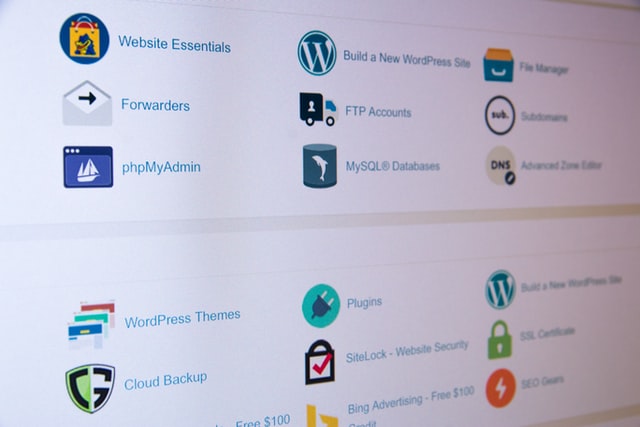When people leave your web page as soon as they visit, it’s known as a ‘bounce.’ Undoubtedly, leaving a web page in search of another means poor user experience. A page’s bounce rate is the percentage of visitors who bounce as soon as they land on the page.
Can you imagine the feeling when someone clicks on your website link and then leaves the page immediately? To make matters worse, they leave the page searching for a different site that has content like yours. It can be frustrating, right?
That’s why you need to start on the right footing by learning effective web design tips. This should help improve your WordPress performance and avoid bounces. After learning the tips, you must also spend some time implementing them.
Don’t worry if you aren’t familiar with the technical aspects of WordPress. You only need to spend more time learning your way out. You can also involve the website design experts if you feel the need.
But, first, let’s discover why your site might be underperforming.
Signs Your WordPress Might be Underperforming
1. You have Outdated Web Design
If you are sure that you haven’t updated your site’s design elements in a while, then you might need to update the design of your page. Most web visitors will get attracted by the design of your site.
Keep in mind that the first impression of your pages’ design elements can either make visitors stay or it can lead to bounces. With web pages, you get only one chance to make a good impression. Once a user gets bored with your page’s design, they might never visit again.
You should check whether your site appears too crowded or too empty. This will help you identify which aspects need improvement or changes.
2. Your Website Loads Very Slow
How fast your website loads whenever a visitor lands on it is crucial. Some users may click on your site to find the information they need immediately. If your page doesn’t load quickly, they might find another source with better performance. Keep in mind that a page that is slow to load gets an automatic high bounce rate. The longer your site loads, the more you’ll lose visitors and rank lower on Google.
According to Loadstorm, 1 out of 4 people will leave a website that takes at least 5 seconds to load. This translates to 74% of users that will leave a page after 5 seconds of waiting for it to load.
3. High Rate of Page Bounce
Google prioritizes the bounce rate in its rank algorithm. When the said algorithm detects that high bounce rate on your website, it’s an indicator that the content isn’t high quality. This may also mean that people didn’t really find what they’re looking for when they clicked on your website.
People usually have very short attention spans. If they don’t quickly find what they’re looking for on your website, chances are, they’re going to look for it somewhere else. This might be due to a lack of helpful content, the overall design of the webpage, or the slow loading speed of the website. Hence, you should identify the causes of your high page bounce rate and find ways to improve them. If you need help resolving your website issues, you can hire a reliable web designer. You can read this blog post to help you find a reliable designer.
4.Poor Website Traffic
Poor website traffic is when you may not be converting into sales. This might be due to particular holes in your site’s content. The best way out is using Google Analytics to calculate ways you can improve your content.
Good content will always convert browsers into recurring customers. In some instances, the user experience could be what is costing you sales. As such, it may be time to do some groundwork and discover what, in particular, needs improvement. For example, if your site isn’t interactive, it may be time to include a section where users can send their feedback or questions at the least.
5.Website is not Mobile-Friendly
In the present day, technology continues to change the ways of doing things. You find that internet users spend most of their online time using mobile devices. Statista reveals that by 2020, over 90% of the worldwide internet population used mobile devices to go online.
Interestingly, the percentage keeps on rising. The same study by Statista indicates that by 2020, the number of new mobile internet users stood at 4.28 billion. This explains why mobile responsiveness is very important when it concerns a positive user experience.
Even then, search engines such as Google are always alert. They will consider mobile load times when ranking your website. This is just how far a mobile-unfriendly WordPress site can cost you.
Again, Google employs mobile-first indexing whenever they rank websites. You can earn penalties if the user experience is not mobile-friendly. This is when users cannot have clear access to your web page using their mobile phones.
Besides, whenever users continue to experience more than usual loading times, they will not stick around to check on your site when there are better competitor sites. This is where competitor analysis comes in handy. Having a strong knowledge of your rivals hands you the advantage and helps design a website that is always one step ahead of the pack.
Thus, to reap the most user benefits, you must focus on designing your site for a mobile-friendly and desktop-friendly user experience.
Top 6 Effective Web Design Tips to Improve Your WordPress Performance
1. Install a Plugin for Caching in WordPress
The pages in WordPress vary, meaning they’re built upon any time a post is visited on your website. WordPress must go through a process to find the essential information in order to build your pages. It then collects the info together and displays it to your potential users.
The process is very detailed. It is also why your website has a possibility to slow down when many people are visiting it at the same time. This explains why every WordPress site should use a plugin for caching. It can improve the loading of your WordPress site from twice to almost 5x faster than the usual loading time.
In essence, this is how it works;
With a caching plugin on your site, you don’t have to undergo the whole page creation process over and over again. Instead, your plugin creates a copy of the page you’re trying to load right after the first time it loads. It then serves the cached copy to each other user that follows.
2. Use the Right Font
As mentioned earlier, web performance is critical for your WordPress site. The font you choose determines the performance of your site. You don’t have to compromise your design when you can choose the right font that will work for your site.
To attract your WordPress site to users, you must be very wise in selecting fonts. Choose fonts with a sleek look and with a feel to them. You should also pick one that’s easy to read, as your content’s readability may influence a user’s experience when browsing your site. Some of the commonly used fonts include:
System Fonts
These are fonts included in every main operating system like Windows and macOS. When you use these fonts in your web design, you don’t need to load anything extra when a person clicks on your web page on your site.
System fonts look pretty good since they match the OS. The best thing about it is that; it doesn’t involve a download time with the browser! You can use it comfortably in your WordPress dashboard. Some users even claim that the system fonts look better on macOS versus Windows.
Most importantly, system fonts operate like web-safe fonts; they do not need any download time with the browser.
Web Fonts
The font appears beautiful but needs download time with the browser. The beauty about it is that; it has both free and premium options. Although it adds to the overall page weight of your site, it can operate from cached CDN. Providers are the likes of Google and Adobe Fonts (TypeKit).
Nonetheless, it helps reduce the total page weight on your website. By April 2020, web fonts summed up to approximately 6.2% of the total website’s weight. Well, the number may not seem huge, but remember that every optimization made contributes to the website’s speed.
Web-Safe Fonts
Web Safe fonts are considered safe for many computers. Every computer with a browser installed has in-built default fonts. This enables text display on web pages.
This type of font is free. The browser also doesn’t need a download time. Web designers always recommend using web-safe fonts to avoid generic fonts like Times New Roman appearing on your website when users visit.
3.Work on Reducing Image Sizes
The bigger the images on your site, the greater the size of your webpage will be. The trick here is to reduce the image sizes without compromising on the image quality.
There are various ways you can work around including images onto your pages without making it look low-quality or poorly designed.
For one, you can talk to an expert web design company, and they’ll tell you that compressing images will drive conversion to your site. Paying attention to file types and images on your site could lead to smaller, more mobile-friendly images.
Ensure you remove unnecessary videos and animations that play automatically. Also, get rid of banners that rotate to help increase the site’s smooth running.
If you optimize the images manually using editing tools, the process may take a little longer. Thankfully, you can find all types of plugins you need for almost everything you need for your WordPress site, including image optimization.
Some of the plugins include WP Smush, Optimal, and EWWW image optimizer. Using any of these will help reduce image sizes, hence improving the website speed.
You can also adjust the placements of your images whenever you edit your website so that they don’t occupy the whole page. This may help improve the loading time and appearance of your site. Furthermore, paying attention to your multimedia materials will help provide a better browsing experience to your users.
4. Choose a Lightweight WordPress Theme
Web visitors get attracted to WordPress sites that contain appealing themes. You need to incorporate several dynamic elements, widgets, sliders, social icons, and other captivating themes. Well, the first impression will always count.
If you use different elements that appeal to the eye and use higher page sizes, you will undoubtedly take your website a notch higher. The best step here is to apply lightweight themes. An example is where you can go for a default WordPress theme.
You can also create your own design if you don’t want your site to appear similar to existing ones that use a default theme.
5. Cut Down on the HTTP Requests
Anytime a visitor clicks on any of your web pages, their browser directs an HTTP request to your web server for the page to load. Each component on the page receives a different request.
Thus, every video, image, script, and stylesheet receives its own request. The more requests sent to load the page, the extra time it takes to load. You can solve this issue by reducing the number of components.
Try to always combine the closely related elements into one file. Cutting down on HTTP requests also means getting rid of irrelevant images and content. These are the best ways to speed up the loading time of your WordPress page.
6. Involve WordPress Hosting
Every website hosting service indeed supports WordPress. Involving WordPress Hosting can be the best decision ever for your site. WordPress-specific hosting involves configuring the hosts’ servers. This way, the hosts will always run your WordPress-based site as fast as possible.
Please note that the web hosts know more about how WordPress works. Thus, apart from considering the web design and site performance, they also offer significant technical support. You can always be sure that any of your WordPress-related questions will never go unanswered.
Final Words
We have discussed effective web design tips that will improve your WordPress performance. You can always stay confident that your WordPress site will load at the right speed to avoid losing visitors. Fast loading pages will improve the user experience on your WordPress, increase page views, and help with WordPress SEO.
Remember that; installing a WordPress caching plugin, using the right font, and reducing image sizes will add user value to your site. Choosing a lightweight WordPress theme, cutting down on HTTP requests, and involving WordPress Hosting are also critical factors for your site’s benefit.
Suggested:
5 Digital Marketplace Where You Can Sell Web Design Templates and Become Popular.
Important Web Design Principles You Need to Know.




